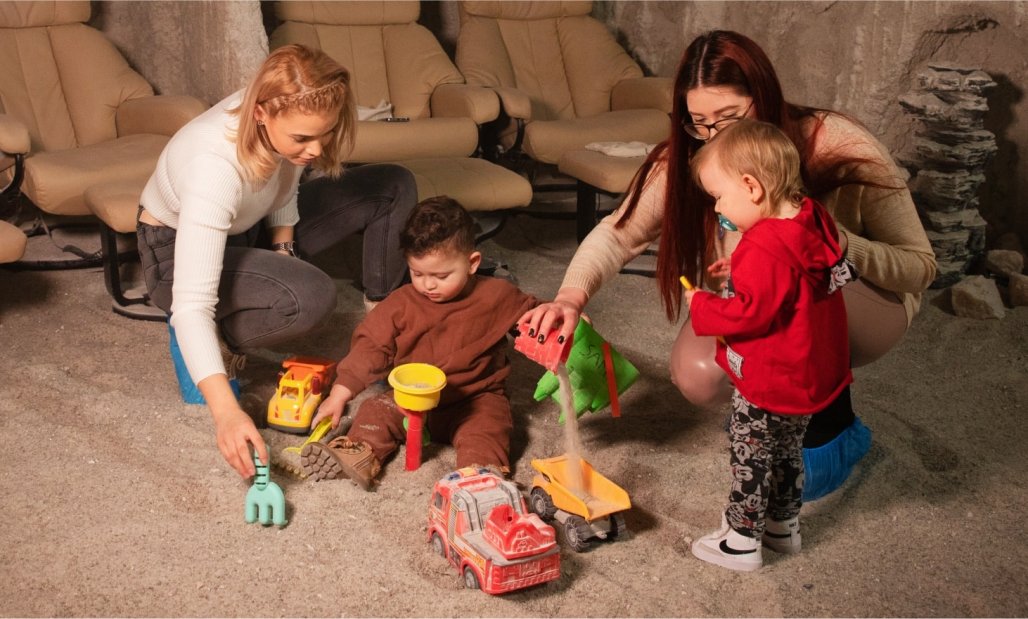In recent years, halotherapy, also known as salt therapy, has emerged as a popular alternative and complementary treatment for various health conditions. This therapy involves breathing in air infused with salt particles, purported to offer numerous health benefits, particularly for respiratory and skin conditions.
Its growing application in pediatrics raises important questions about its safety and effectiveness for children. This article delves into the current state of knowledge regarding halotherapy for children, focusing on clinical trials and expert opinions to shed light on its potential as a suitable therapy for young patients.
Understanding Halotherapy
Halotherapy is a natural therapy that mimics the microclimate of salt caves. It involves inhaling micronized dry salt within a controlled environment, where the air is saturated with salt particles. The therapy is believed to cleanse the respiratory system, promote better breathing, fight infection, and alleviate various skin conditions. Halotherapy centers have become increasingly common, offering sessions for both adults and children.
Safety of Halotherapy for Children
When considering any therapy for children, safety is the paramount concern. Given the non-invasive nature of halotherapy, it is generally considered safe for children. The therapy’s gentle approach, free from pharmaceuticals, makes it an attractive option for parents looking for natural remedies for their children’s ailments. However, it is crucial to consult a healthcare provider before starting any new treatment to ensure it is appropriate for the child’s specific health condition.
Clinical evidence supports the safety of halotherapy for children. For instance, a study published in the “Pediatric Pulmonology” journal examined the effects of halotherapy on children with mild asthma. The study found no adverse effects, suggesting that halotherapy is a safe complementary therapy for children with this condition. However, the study also emphasized the need for further research to conclusively determine the therapy’s safety profile.
Effectiveness of Halotherapy in Treating Respiratory and Skin Conditions
The therapeutic benefits of halotherapy, particularly for respiratory and skin conditions, have been the subject of several clinical trials. A significant area of research has been its effectiveness in treating pediatric respiratory conditions such as asthma and bronchitis.
One notable study published in the “Journal of Aerosol Medicine” reported that children with bronchial asthma who underwent halotherapy sessions showed significant improvement in lung function tests compared to those who did not receive the treatment. This suggests that halotherapy can be an effective complementary therapy for managing symptoms of asthma in children.
Regarding skin conditions, halotherapy has been touted for its potential to alleviate symptoms of eczema and psoriasis. While comprehensive clinical trials in children are limited, anecdotal evidence and preliminary studies indicate positive outcomes. The salt’s natural anti-inflammatory and antibacterial properties are believed to contribute to these therapeutic effects.
Considerations for Parents
Parents considering halotherapy for their children should take several factors into account. It’s important to choose reputable halotherapy centers with experienced staff and to ensure that the facility caters to pediatric patients. Additionally, while halotherapy can complement conventional treatments, it should not replace them without a doctor’s advice.
Conclusion
Halotherapy presents a promising complementary therapy for children with respiratory issues or skin conditions. Clinical trials and research to date indicate it is a safe and potentially effective treatment option. However, the importance of further studies cannot be overstated, as they will provide deeper insights into its efficacy and long-term safety for pediatric patients. Parents and healthcare providers must work together to assess whether halotherapy is an appropriate choice for their child’s specific health needs, always prioritizing safety and well-being.
We hope you found the information above useful. Leave a comment below, or contact us if you have any questions.
